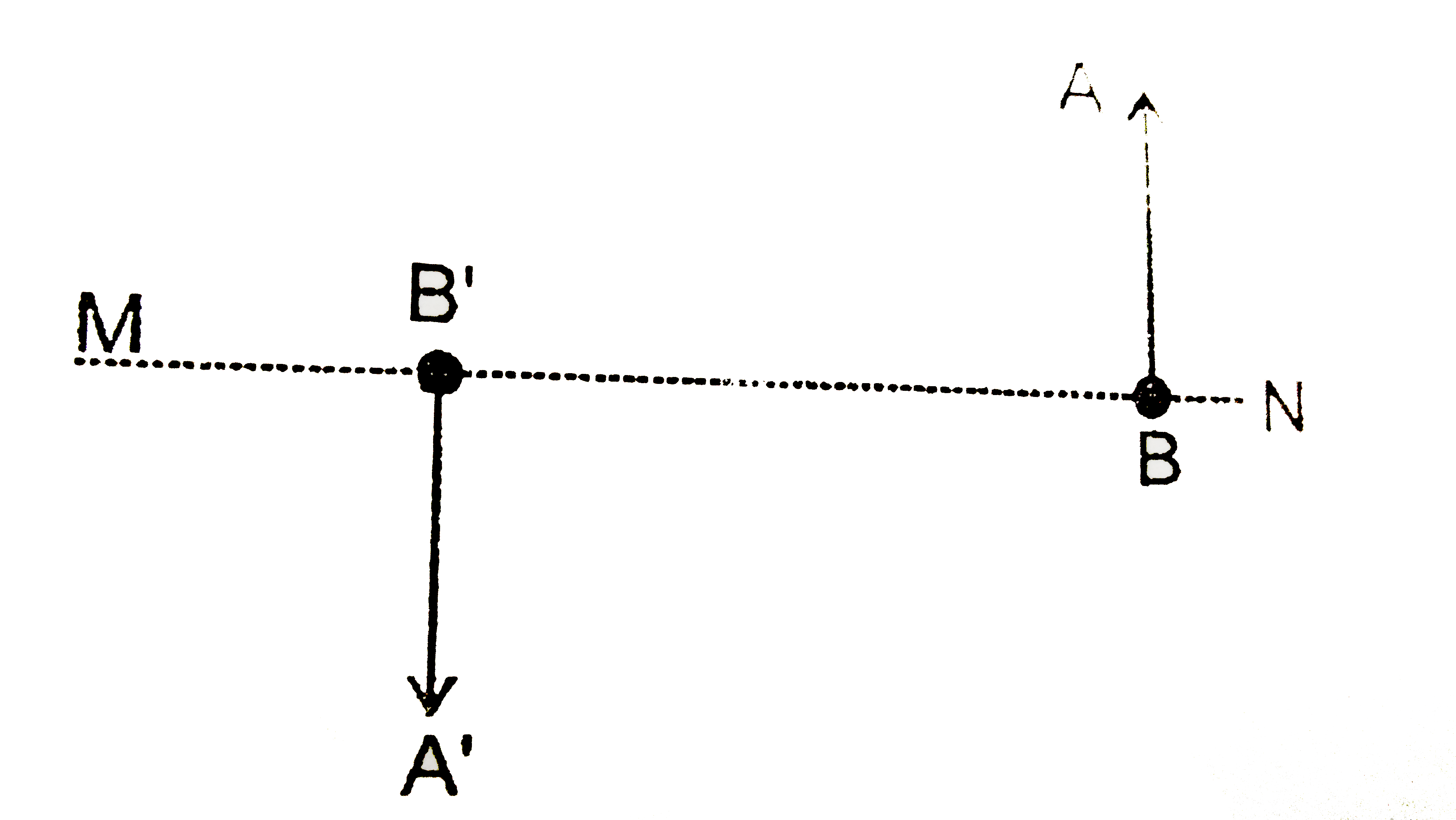If a piece of paper is placed at the position of a virtual image of a strong light source, will the paper burn after sufficient time ? What happens if the image is real? What happens if the image is real but the source is virtual ?
To solve the question, we will analyze each scenario step by step.
Step 1: Virtual Image of a Strong Light Source
Analysis: A virtual image is formed when light rays diverge, and they appear to come from a certain point but do not actually converge there. For example, a concave lens creates a virtual image.
Conclusion: If a piece of paper is placed at the position of a virtual image of a strong light source, the paper will not burn. This is because the light rays are diverging, meaning they do not converge at the virtual image point to produce sufficient intensity or heat.
Step 2: Real Image of a Strong Light Source
Analysis: A real image is formed when light rays converge at a point. This can be achieved using a convex lens. When parallel rays of light pass through a convex lens, they converge to form a real image.
Conclusion: If the image is real, the piece of paper will burn. This is due to the convergence of light rays at the image point, which increases the intensity of light and generates enough heat to ignite the paper.
Step 3: Real Image with a Virtual Source
Analysis: In this case, we have a virtual source that produces light, but the image formed is real. The virtual source can be thought of as a point from which light appears to emanate, but it does not actually produce light itself. However, if this virtual source is coupled with a lens that converges the light to form a real image, the situation changes.
Conclusion: Even though the source is virtual, if it produces a real image through a lens, the piece of paper can burn. This is because the light rays converge at the real image point, leading to an increase in intensity and heat.
Summary of Conclusions:
1. Virtual Image: Paper will not burn.
2. Real Image: Paper will burn.
3. Real Image from a Virtual Source: Paper will burn.
Analysis: A virtual image is formed when light rays diverge, and they appear to come from a certain point but do not actually converge there. For example, a concave lens creates a virtual image.
Analysis: A real image is formed when light rays converge at a point. This can be achieved using a convex lens. When parallel rays of light pass through a convex lens, they converge to form a real image.
Analysis: In this case, we have a virtual source that produces light, but the image formed is real. The virtual source can be thought of as a point from which light appears to emanate, but it does not actually produce light itself. However, if this virtual source is coupled with a lens that converges the light to form a real image, the situation changes.
1. Virtual Image: Paper will not burn.
2. Real Image: Paper will burn.
3. Real Image from a Virtual Source: Paper will burn.
Topper's Solved these Questions
Similar Questions
What is a real image?
View SolutionWhat happens to the image distance in the eye when we increase the distance of an object from the eye ?
View SolutionWhich of the following do not form diminished virtual image of a real object ?
View SolutionA student focuses the image of a well illuminated distant object on a screen using a convex lens. After that the gradually moves the object towards the lens and each time focuses its image on the screen by adjucting the lens.
(a) In which direction -towards the screen or away from the screen, does he move the lens ?
(b)What happens to the size of the image-does it decrease or increase ?
(c) What happens to the image on the screen when he moves the object very close to the lens ?
View SolutionWhat is meant by magnification ? Write its expression. What is its sign for the a. real b. virtual, image?
View SolutionAn object is placed at a distance of 15 cm in form of a convex mirror of radius of curvature 10 cm. a.where will the image form? B. Find the magnification m. c. What will be the nature of image real or virtual?
View SolutionGiven an optical axis MN and the positons of a real object AB and its image A'B', detormine diagramatically the positon of the lens (its optical centre O) and its foci, it it a converging or diverging lens? Is the image real or virtual?

View SolutionDifferentiate between a real and a virtual image.
View SolutionDifferentiate between a real and a virtual image.
View SolutionIf the distance between the virtual image from Its real object is 60 cm in case of a concave mirror . The focal length of the concave mirror If the image formed is 3 times magnified image is
View Solution
